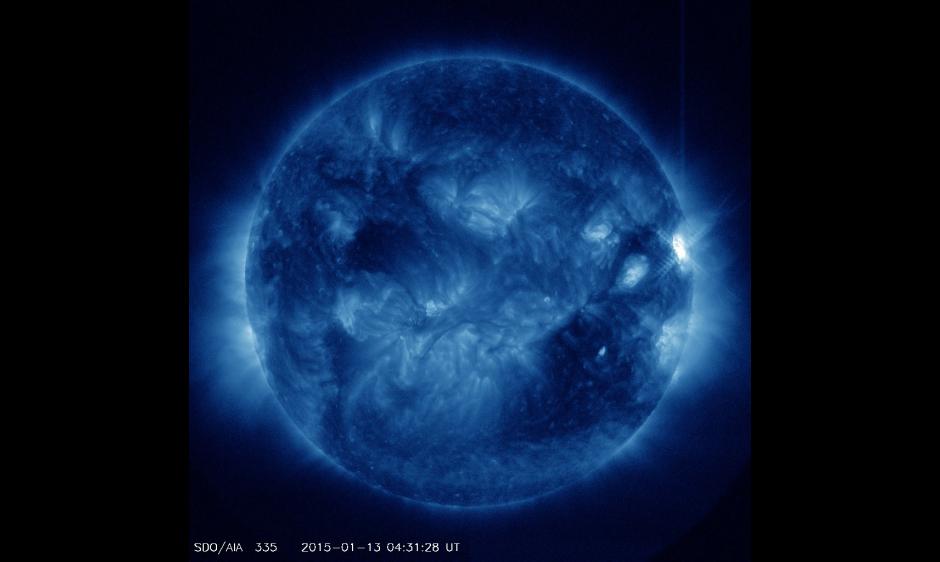
NOAA Active Region AR12257 produced a R2 (Moderate) solar flare radio blackout at 1124 pm (EST) on 12 January 2015 (the bright region on the far right of this NASA SDO image). Effects from this event included limited blackout of high frequency (HF) radio communication on the sunlit side of the Earth lasting for tens of minutes. The event was followed quickly by another radio blackout event, an R1 (Minor) event, from the same region. LASCO coronagraph imagery did not show a coronal mass ejection associated with this event, and even if there had been one, the location of the eruption would have likely sent that CME well away from Earth. This region should be rotating out of view in the next couple of days. Meanwhile, the rest of the active regions on the visible disk remain relatively small and inactive.